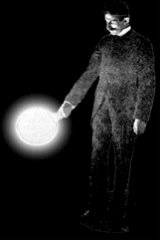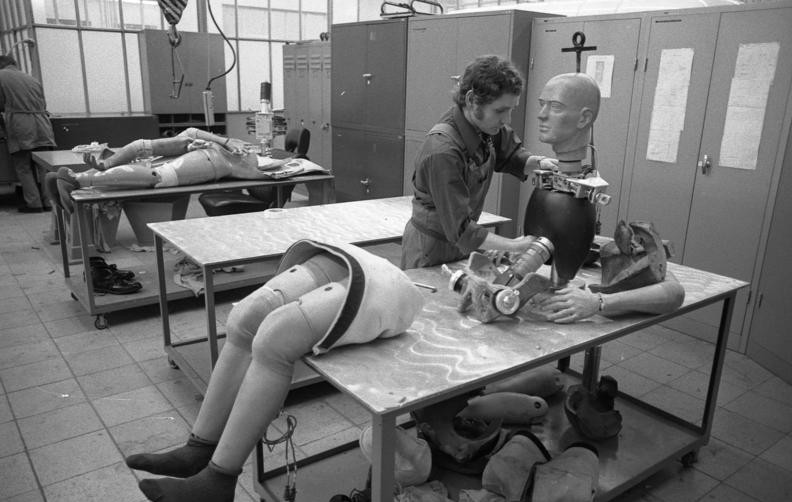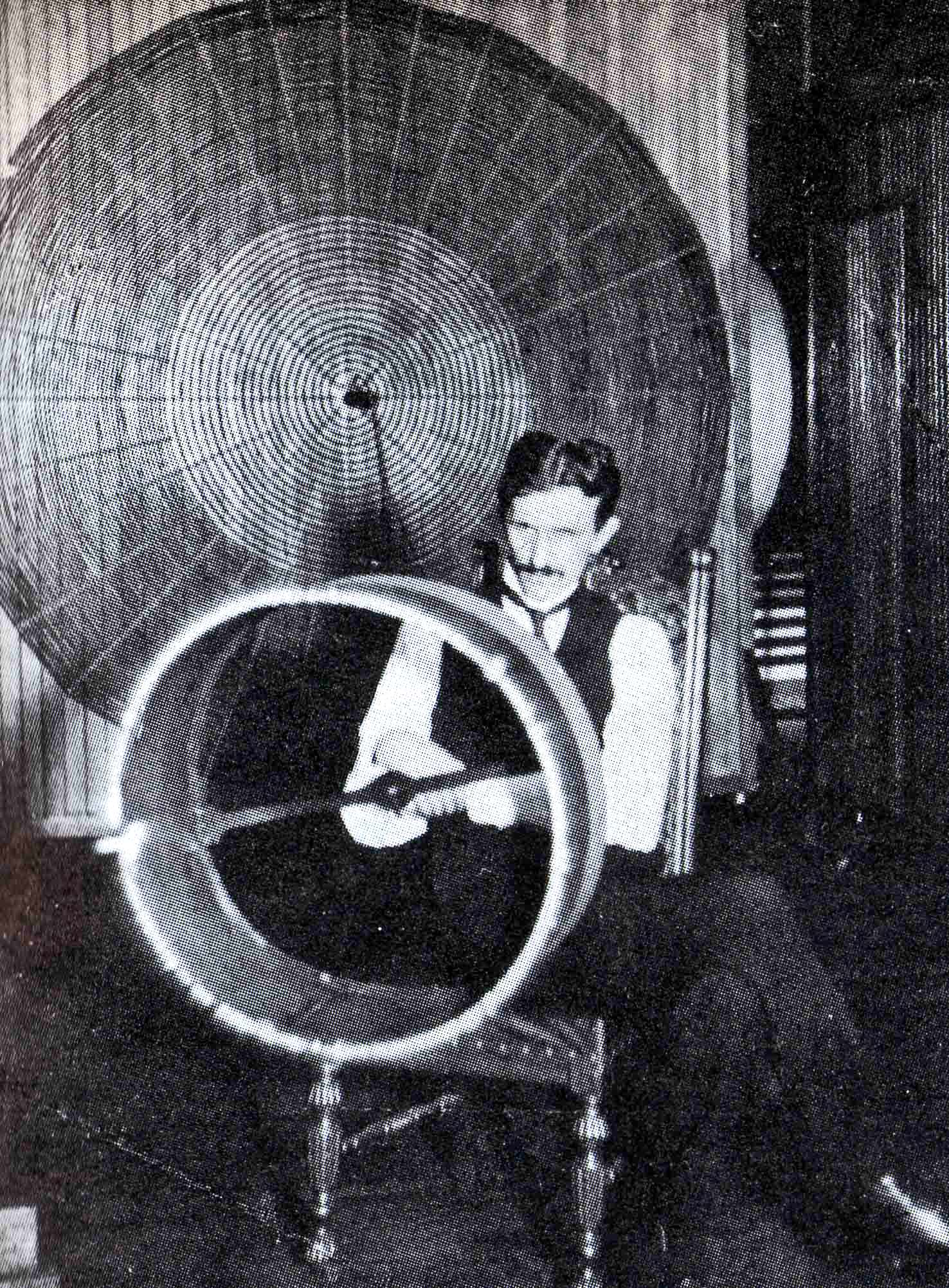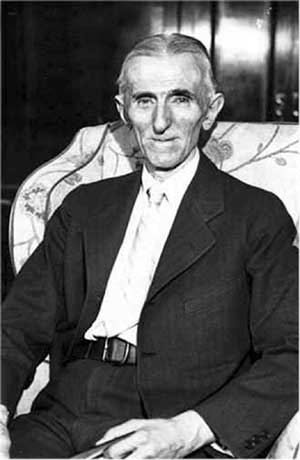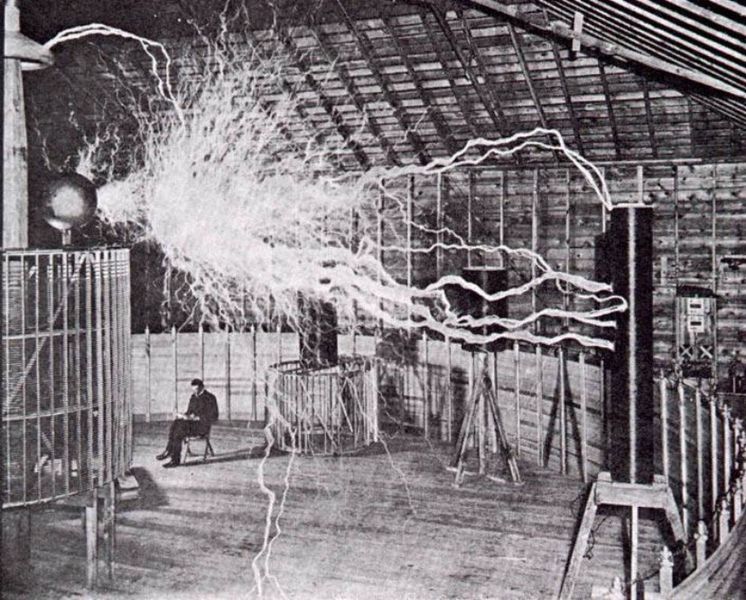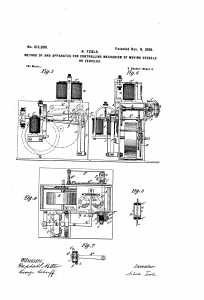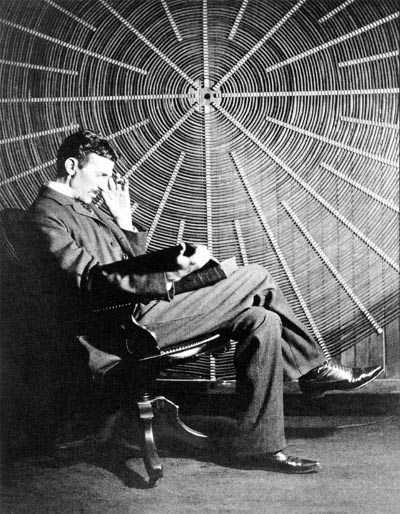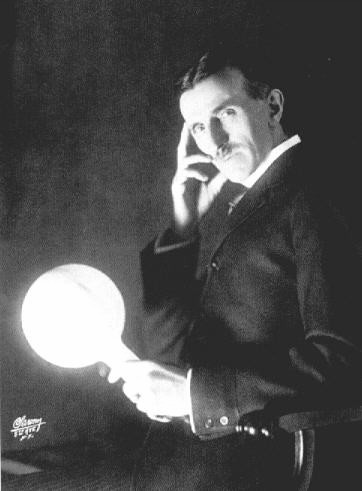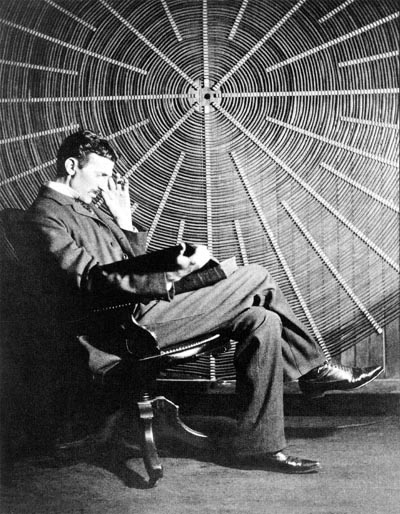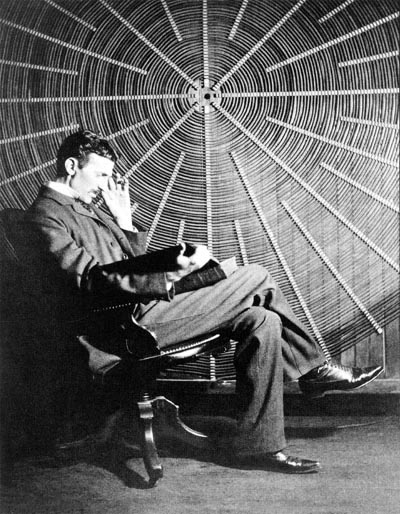Nikola Tesla, an electrician, made remarkably prescient predictions about mobile and drones, even if he didn’t always fully appreciate the implications of such inventions. By the end of his career, Tesla was dreaming up wacky flying machines for apartment dwellers that couldn’t possibly take flight, but he was more correct in his era about the big picture coming into view than pretty much anyone.
Another of the inventor’s boldest visions–transmitting power wirelessly through the air–seems about to be realized. You will never be without cat memes and pornography again. The opening of Christopher Mims latest immaculately written WSJ column:
In 1902 workers completed a mysterious tower, 187 feet high and shaped like a giant mushroom, on which rested the hopes of one of the 20th century’s most prolific geniuses.
Facing the beach in the hamlet of Shoreham, N.Y., on Long Island, the Wardenclyffe Tower was, according to its inventor, Nikola Tesla, the key that could unlock an age of wonders.
As Mr. Tesla later wrote, the tower’s ability to transmit information to the far side of the Earth would someday allow the creation of “an inexpensive instrument, not bigger than a watch, [which] will enable its bearer to hear anywhere, on sea or land, music or song however distant.”
Sometime in 2016, Tesla’s other prediction—that it isn’t only possible, but commercially viable, to transmit power as well as information through the air, without wires—is expected to come true.
What is coming are hermetically sealed smartphones and other gadgets that charge without ever plugging into a wall. And soon after there will be sensors, cameras and controllers that can be stuck to any surface, indoors or out, without the need to consider how to connect them to power.•


